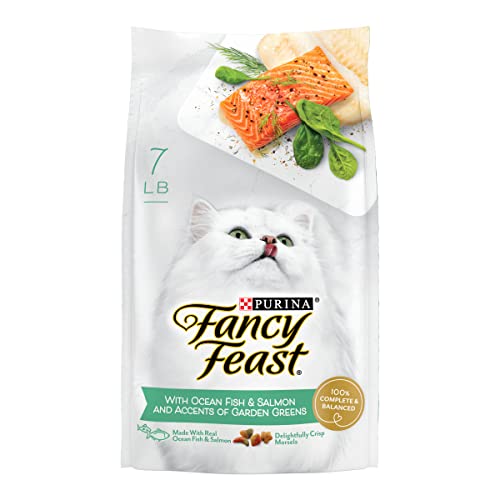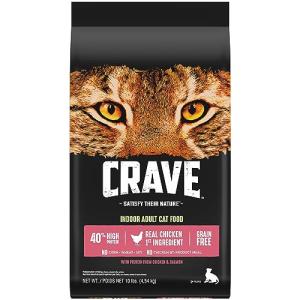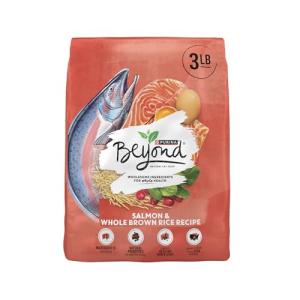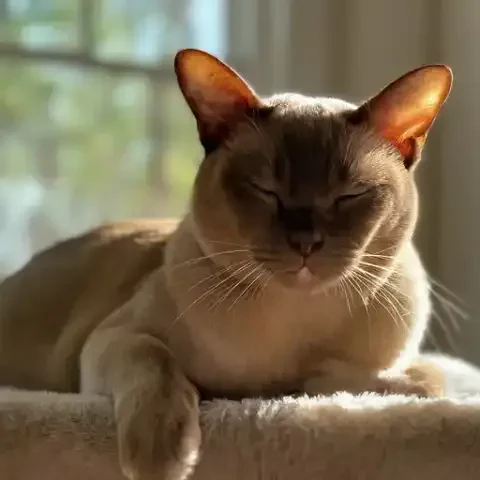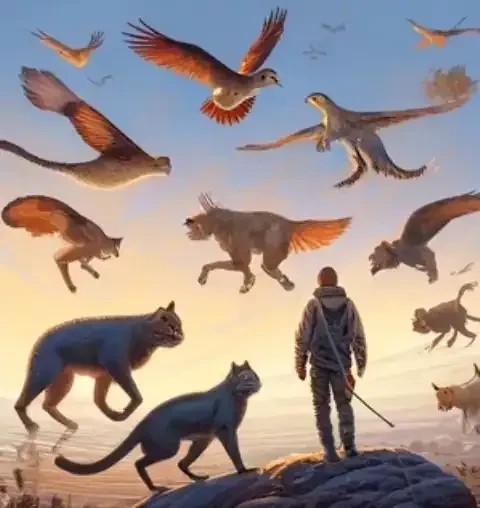For centuries, whispered legends have circulated about a mystical form of yoga, practiced not by bendy humans in spandex, awkwardly contorting themselves into shapes vaguely resembling trees, but by creatures of pure, unadulterated grace…and a healthy dose of random napping. We speak, of course, of Cat Yoga. This ancient and revered practice, passed down through generations of felines in hushed meows and subtle tail twitches, promises enlightenment, flexibility (for those crucial mid-nap stretches), and a profound connection to the inner purr. Or so the legends say. For those of us less versed in feline mysticism, and more accustomed to witnessing cats primarily as furry, four-legged chaos engines, the concept of Cat Yoga might seem… well, utterly preposterous. We, in our human yoga studios, strive for flexibility, mindfulness, and inner peace. But what happens when you apply these lofty principles to a being whose core philosophy revolves around napping in sunbeams, batting at dangling things with laser focus, and occasionally engaging in zoomies at 3 AM for reasons known only to themselves? This, dear reader, is the question that plagues philosophers and cat enthusiasts alike. Is Cat Yoga a genuine path to higher consciousness, a secret discipline misunderstood by the unenlightened masses? Or is it, as many suspect, simply a hilarious, furry, chaotic mess that ends with someone – likely the human participant – getting scratched and covered in shed fur? This article will bravely (and perhaps foolishly) attempt to unravel the mysteries of Cat Yoga, dissecting its supposed poses with a critical yet amused eye, exploring its questionable mindfulness techniques, and ultimately, determining if it's a path to true enlightenment, or just another excuse for our feline overlords to be utterly, hilariously, and undeniably… cats.
Let us begin our exploration of this purr-plexing practice with the foundational pose of many a yoga discipline: Downward Dog. For humans, Downward Dog is lauded as a grounding pose, a stretch that elegantly lengthens the spine, promotes blood flow to the brain, and fosters a profound sense of calm. It’s a pose of intention, of strength, and of mindful extension. Now, let us consider the Cat Downward Dog. Achieved, in its purest feline form, after approximately eighteen hours of rigorous napping. The primary purpose of this pose, as far as we can ascertain, is not spinal elongation or blood flow enhancement, but rather, a perfunctory stretch of the back legs, performed solely in preparation for… you guessed it, another nap. It may involve a dramatic yawn, a truly impressive display of gape-mouthed feline flexibility that often appears to dislocate their jaw entirely. The spiritual goal of human Downward Dog may be serenity; the spiritual goal of Cat Downward Dog is, without question, pre-nap limbering. And perhaps, just perhaps, identifying any rogue dust bunnies lurking beneath the furniture that may threaten naptime serenity.
The execution of Cat Downward Dog, however, is rarely a picture of yogic grace. Consider, for example, the "Accidental Stretch and Fall" variation. Our feline yogi, perhaps attempting a particularly ambitious stretch atop a precarious surface – the edge of the sofa, a narrow windowsill, the armrest of a rocking chair – fully commits to the downward dog position. Spine lengthening commences, back legs extend… and then, disaster strikes. Balance, never a cat’s strongest suit outside of precisely calculated leaps onto high shelves, falters. Mid-stretch, the feline yogi loses their footing, and dramatically tumbles off their chosen perch. Do they land gracefully, in a pose of serene acceptance? Absolutely not. They land with a bewildered thump, a startled yelp, and a look of utter indignity. And what follows? A moment of stunned silence, a quick self-assessment to ensure all limbs are still functional, and then… the classic feline cover-up: intense, focused grooming. As if to say, "Falling? Tumbling? Oh no, dear human, that was merely a highly advanced, intentionally acrobatic variation of Downward Dog. You simply wouldn't understand its nuanced complexity."
Then there’s the "Is That Food?" Stretch. In this variation, the cat enters a pose that, from a distance, might vaguely resemble Downward Dog. However, upon closer inspection, the true motivation becomes clear. The feline yogi is not seeking spinal alignment, but rather, olfactory enlightenment. They are stretching downwards, yes, but primarily to sniff intently under the furniture, convinced, absolutely convinced, that they have detected the faintest, most tantalizing scent of… a crumb. They strain, they sniff, they contort their necks at improbable angles, all in the pursuit of this phantom morsel. When, inevitably, the crumb proves to be nothing more than dust (or worse, just carpet fibers), the Downward Dog is abruptly abandoned. The feline yogi rises, shakes their head with a look of profound disappointment, and stalks off to find a more promising, and hopefully food-crumb-laden, location for their next yoga-adjacent activity.
And finally, we have the "Downward Dog… to Attack!" variation, a testament to the feline ability to seamlessly blend yoga with predatory instinct. The cat assumes the Downward Dog position, stretches languidly… and then, with lightning-fast reflexes, suddenly springs forward into a hunter's crouch. The "stretch," it turns out, was not a yoga pose at all, but merely a cunning prelude to pouncing. Why the sudden pounce? Perhaps a rogue dust bunny dared to venture into their field of vision. Perhaps a sunbeam shifted slightly, creating a fleeting shadow that triggered their hunting instincts. Whatever the reason, the "Downward Dog" was merely a deceptive starting position for a far more pressing feline pursuit: the utter and complete annihilation of a perceived threat, no matter how minuscule or inanimate. The spiritual goal of Cat Downward Dog, therefore, is far removed from the human aspirations of inner peace. It is a pose dedicated to pre-nap comfort, dust bunny surveillance, and the perpetual, unwavering quest for… well, maybe just a crumb after all.
Moving on to the more dynamic aspects of yoga, let's consider the "Warrior Poses." In human yoga, the Warrior Poses – Warrior I, Warrior II, Warrior III – are all about building strength, cultivating confidence, and fostering inner resilience. They are powerful stances, designed to channel inner power and prepare us to face life's challenges head-on. Cat Warrior Poses, however, offer a slightly… different interpretation of inner power. A Cat Warrior Pose typically involves balancing precariously on the very edge of a piece of furniture – a chair back, a wobbly table, the thinnest sliver of windowsill imaginable. Claws extend, not for grounding or stability, but menacingly, at imaginary foes. These foes might be dust motes, reflections in a window, or, most commonly, absolutely nothing at all. The feline yogi strikes a pose of fierce determination, legs trembling slightly from the precarious balance, and generally looks less like a warrior channeling inner strength, and more like they are about to topple over in a flurry of fur and flailing limbs. The purpose of Cat Warrior Poses, it seems, is not to face inner turmoil, but to assert dominance over inanimate household objects, and to subtly convey to any onlookers (especially humans) that they are, in fact, in charge of this entire operation, even if “this operation” is simply precariously balancing on a chair.
Take, for instance, the "Wobbly Warrior of the Bookshelf." Our feline warrior, in a misguided attempt to embody strength and stability, chooses the most unstable location imaginable: a crowded bookshelf. They attempt a Warrior II, extending a leg precariously over the edge, stretching another paw towards the towering stacks of literature. The result? A catastrophic cascade of books. Volumes of Shakespeare tumble dramatically to the floor, ancient tomes of feline history (likely nonexistent, but let’s pretend) crash down in a literary avalanche. The cat, amidst the falling paperbacks, barely manages to maintain their balance, clinging precariously to the shelf edge with frantically digging claws. Do they look like a warrior? No. They look like a fluffy, four-legged agent of chaos, leaving a trail of literary destruction in their wake, more clumsy aggressor than poised warrior.
Or consider the "Warrior Stance… to Beg for Food." Here, the warrior pose takes on a distinctly… culinary motivation. The cat assumes a wide, warrior-like stance, legs spread, back arched, tail held high. Impressive, you might think, a true embodiment of feline power! But then you notice the subtle clues. The unwavering gaze, locked not on some distant inner horizon, but directly on their human, who happens to be holding a treat bag. One paw is raised, not in a gesture of strength, but in a clear, unmistakable begging posture. The “inner power” being channeled here is not resilience or confidence, but powerful, overwhelming hunger, expertly disguised as a warrior stance.
And finally, there is the "Fluffy Fury Warrior." This variation begins promisingly enough. The cat enters a warrior-like stance, strikes a noble pose, seems ready to face any and all challenges. But then, suddenly, inexplicably, the warrior pose dissolves. The cat erupts into a flurry of frantic grooming. Licking, pawing, contorting themselves into improbable shapes to reach every single strand of fur. The warrior stance is completely abandoned, replaced by a fervent devotion to personal hygiene. Inner resilience? Forget about it. The inner imperative to be impeccably groomed clearly trumps any and all warrior-like aspirations. The true spiritual goal of Cat Warrior Poses, we must conclude, is not inner strength or resilience, but rather, establishing dominance over the sofa cushions, practicing battle-ready stances against rogue socks, and, perhaps most importantly, maintaining a state of impeccable personal grooming, even amidst the chaos of their warrior training.
Now, if there is one yoga pose that cats have truly, undeniably mastered, it is Child's Pose. Human yoga instructors describe Child's Pose as a resting pose, one that promotes relaxation, grounds energy, and fosters a deep sense of peace and surrender. It’s a pose of vulnerability, of letting go, of finding stillness in the midst of chaos. Cats? Cats are black belts in Child's Pose. They achieve it effortlessly, in any location, at any time, with or without any formal yoga instruction. They can transition into a perfect Child’s Pose from a full sprint, from mid-meal, even mid-sentence (if cats could talk, which thankfully, they mostly choose not to). For a cat, Child's Pose is not just a yoga pose; it’s a lifestyle. It’s the foundation of their existence, the bedrock of their being, the very essence of… napping. Yoga just wishes it could be this good at relaxing.
Consider the "Zen Master Napper" variation. A human yogi, striving for ultimate relaxation and inner peace, finally manages to settle into Child's Pose. They close their eyes, focus on their breath, begin to drift towards a state of serene tranquility… and then, whump. A warm, furry weight descends upon their back. Their cat, the ultimate Zen Master Napper, has effortlessly transitioned into their own, superior Child’s Pose, directly on top of the human. The cat, purring contentedly, has claimed the human yogi as a personal, warm, and conveniently pre-heated yoga mat. The human’s peaceful relaxation? Interrupted. The cat’s napping prowess? Undisputed.
Then there is the "Child's Pose Interruption." A human attempts a guided meditation during their yoga session, seeking deeper levels of relaxation and mindfulness. They settle into Child’s Pose, close their eyes, and begin to follow the soothing voice of the meditation app. Peace descends… for approximately five seconds. Then, a persistent, insistent purring vibrates through their back. The cat has decided that this is the perfect moment for a petting session. They enter Child’s Pose mid-human yoga session, draping themselves artfully across the human’s spine, purring loudly, and demanding chin scratches with insistent head nudges. The human’s peaceful relaxation transforms, inevitably, into a feline-focused petting session. Mindfulness? Replaced by mandatory cat worship.
And for the truly advanced feline yogi, there is the "Child's Pose Variation – The Box Edition." Observe a cat confronted with a cardboard box. Any cardboard box. Size is irrelevant, structural integrity optional. The cat, with a determination that borders on the obsessive, will proceed to contort their body into an impossibly small space, squeezing, folding, and reshaping themselves until they have achieved a perfect Child’s Pose within the confines of the box. It’s a variation so advanced, so profoundly dedicated to napping mastery, that it is practically origami in feline form. Yoga class? Unnecessary. For true napping enlightenment, all you need is a cardboard box and a cat’s unwavering commitment to comfort. The true spiritual goal of Cat Child's Pose, we must conclude, is not human concepts of surrender or peace. It is the feline pursuit of perfecting the art of napping in any and all circumstances, achieving maximum levels of comfort, and proving, definitively, to all humans that they are, in fact, the ultimate, undisputed napping gurus of the universe.
Finally, let’s consider the cornerstone of any true yoga practice: mindfulness and meditation. Human yoga emphasizes focusing on the breath, paying attention to body sensations, and grounding oneself in the present moment. It’s about cultivating inner awareness, quieting the mental chatter, and finding peace within. Cat mindfulness, however, offers a slightly… more selective approach to the present moment. Cat “mindfulness” is indeed a state of hyper-focused attention, but the focus is typically directed towards… potential food sources. Or the movements of birds fluttering outside the window. Or the precise location of the sunbeam currently gracing the living room carpet. Feline “present moment” awareness primarily revolves around immediate gratification, potential snacks, and the ever-present threat of closed doors, not inner peace or spiritual enlightenment.
Consider the "Treat-Focused Meditation." A human attempts a guided meditation, seeking to cultivate inner stillness and quiet their racing thoughts. Their cat, in a rare display of seeming cooperation, actually sits “meditatively” beside them, paws tucked neatly, eyes half-closed. Progress! Enlightenment is at hand! Except… upon closer inspection, the feline yogi’s gaze is not focused on their inner self, but rather, laser-locked on the treat jar across the room. Their “meditative” stillness is not inner peace, but rather, intense, treat-anticipating focus. Their “enlightenment” is entirely contingent on the imminent arrival of crunchy, fish-flavored rewards.
Or consider the "Sudden Bird Distraction." Human yogi attempts a more advanced meditation, seeking to deepen their mindfulness practice. They sit in quiet contemplation, focusing intently on their breath, striving for a state of pure, unadulterated Zen. The cat, initially appearing to be calmly participating in the meditative session, suddenly shatters any semblance of mindfulness. Abruptly bolting upright, ears twitching frantically, eyes wide and pupils dilated, they become utterly fixated on a bird flitting past the window. The human’s guided meditation? Instantly forgotten. Inner peace? Shattered into a million bird-sized pieces. Feline mindfulness, it seems, is highly susceptible to avian-based interruptions.
And lastly, we have the "Scent-Based Sensory Awareness" meditation. Human yogi seeks to enhance their sensory awareness, grounding themselves in the present moment by focusing on smells and tactile sensations. They breathe deeply, inhaling the scent of incense, consciously feeling the texture of their yoga mat beneath their hands. Their cat, initially seemingly uninterested, suddenly becomes deeply, intensely immersed in “sensory awareness” too. They begin sniffing the yoga mat with profound, unwavering focus, inhaling deeply, exhaling thoughtfully. Sensory enlightenment! Mindfulness achieved! Except… upon even closer inspection, it becomes clear that the feline yogi is not actually appreciating the subtle textures and scents of the universe. They have discovered a stray human hair clinging to the yoga mat. And their intense “sensory awareness” is entirely devoted to… licking. Licking the stray hair with laser focus, with unwavering dedication, with the single-mindedness of a creature utterly, profoundly, and perhaps inexplicably, obsessed with personal grooming. Feline senses, it turns out, prioritize personal hygiene over Zen. The true spiritual goal of Cat Mindfulness, therefore, is not inner awareness or present moment focus, but rather, cultivating hyper-vigilance for any and all food opportunities, mastering the art of selectively ignoring human instructions, and achieving peak sensory awareness… for detecting the faintest rustle of a treat bag, or perhaps, just a stray human hair requiring immediate, thorough, and enthusiastic licking.
So, having delved into the supposed depths of Cat Yoga, let us consider the “benefits.” For whom, exactly, are these benefits intended? Human yoga practitioners claim benefits like increased flexibility, enhanced mindfulness, and deeper inner peace. Can we, with a straight face (and perhaps a slightly scratched arm), claim the same for Cat Yoga? Perhaps… ironically. Perhaps, for humans, the primary benefit of attempting Cat Yoga is indeed “increased flexibility”… but not necessarily their own flexibility. Rather, flexibility in their patience muscles. Flexibility in their ability to bend over backwards (literally and figuratively) to accommodate the utterly unpredictable whims of a feline participant. Enhanced mindfulness? Yes, absolutely. Cat Yoga will certainly enhance your mindfulness… of precisely where the cat is going to step next. Mindfulness of the sudden, unexpected bursts of feline energy that might send your carefully constructed yoga flow into utter chaos. Mindfulness of the delicate balance between attempting a peaceful pose and simultaneously preventing your cat from using your head as a scratching post. And deeper inner peace? Perhaps. Perhaps a deeper inner peace can be achieved… after accepting the chaos. After surrendering to the feline unpredictability. After resigning yourself to the fact that any attempt at structured yoga with a cat involved will inevitably devolve into a furry, hilarious, and slightly scratchy mess.
But what about the cats themselves? Do they reap any benefits from this supposed “yoga” practice? Oh, absolutely. For cats, the benefits of Cat Yoga are numerous, entirely self-serving, and undeniably delightful. They gain a warm, human yoga mat perfectly suited for extended napping sessions. They gain a captive audience for demanding pets, chin scratches, and general feline worship. They gain ample opportunities to sharpen their claws on expensive yoga equipment (mats, blocks, straps – all fair game). And, perhaps most importantly, they gain guaranteed human attention, even if that attention is often tinged with exasperation, bewilderment, and the occasional muttered curse word.
So, is Cat Yoga a path to enlightenment? For humans, probably not in the traditional, spiritually uplifting sense. For cats? Absolutely. Enlightenment in the form of more naps, more treats, and more opportunities to be utterly, hilariously, and undeniably… cats. And perhaps, in the grand cosmic joke of it all, that is a form of enlightenment in itself. Namaste-ow.

